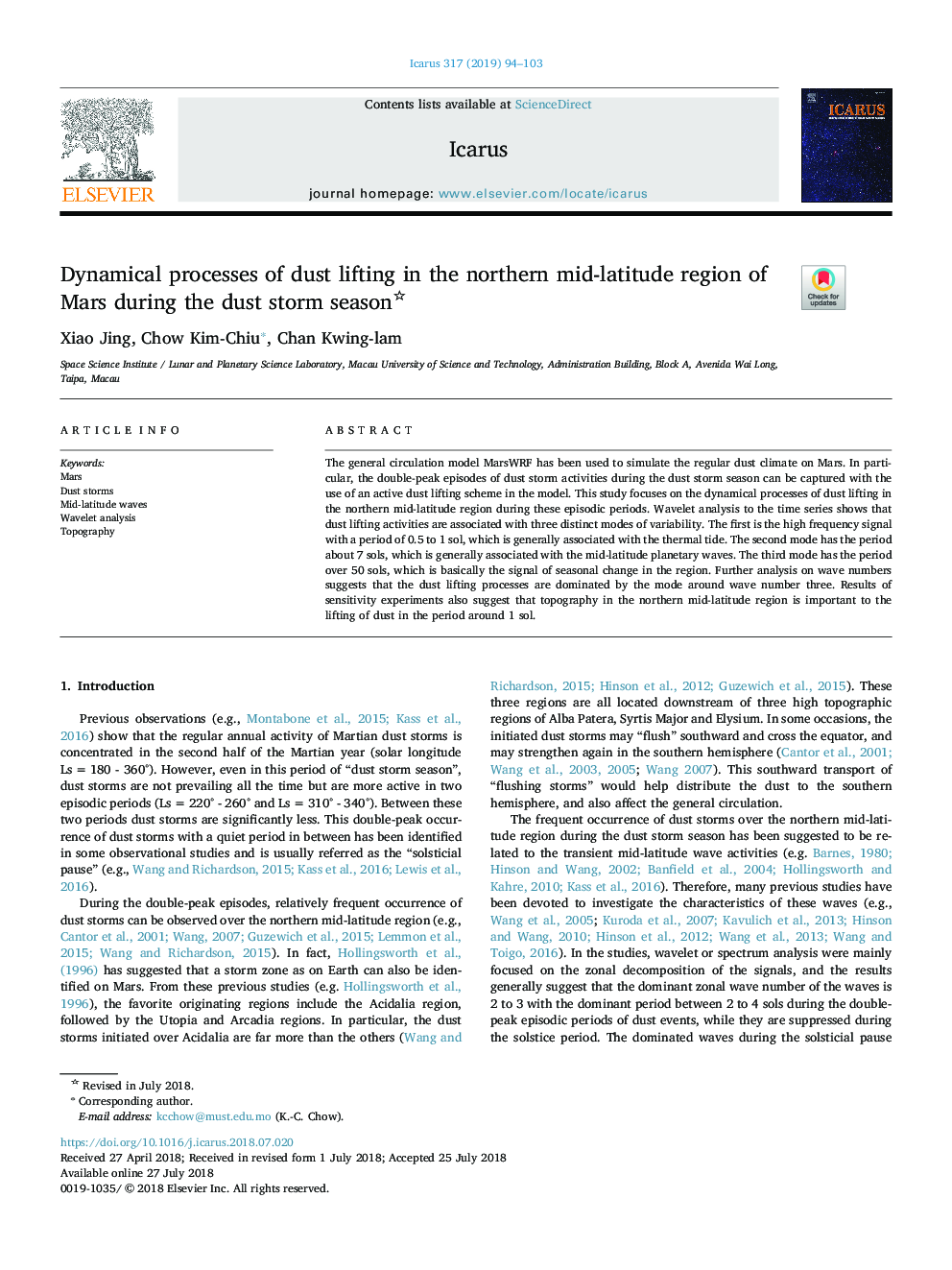| Article ID | Journal | Published Year | Pages | File Type |
|---|---|---|---|---|
| 8133649 | Icarus | 2019 | 10 Pages |
Abstract
The general circulation model MarsWRF has been used to simulate the regular dust climate on Mars. In particular, the double-peak episodes of dust storm activities during the dust storm season can be captured with the use of an active dust lifting scheme in the model. This study focuses on the dynamical processes of dust lifting in the northern mid-latitude region during these episodic periods. Wavelet analysis to the time series shows that dust lifting activities are associated with three distinct modes of variability. The first is the high frequency signal with a period of 0.5 to 1 sol, which is generally associated with the thermal tide. The second mode has the period about 7 sols, which is generally associated with the mid-latitude planetary waves. The third mode has the period over 50 sols, which is basically the signal of seasonal change in the region. Further analysis on wave numbers suggests that the dust lifting processes are dominated by the mode around wave number three. Results of sensitivity experiments also suggest that topography in the northern mid-latitude region is important to the lifting of dust in the period around 1 sol.
Related Topics
Physical Sciences and Engineering
Earth and Planetary Sciences
Space and Planetary Science
Authors
Xiao Jing, Chow Kim-Chiu, Chan Kwing-lam,
